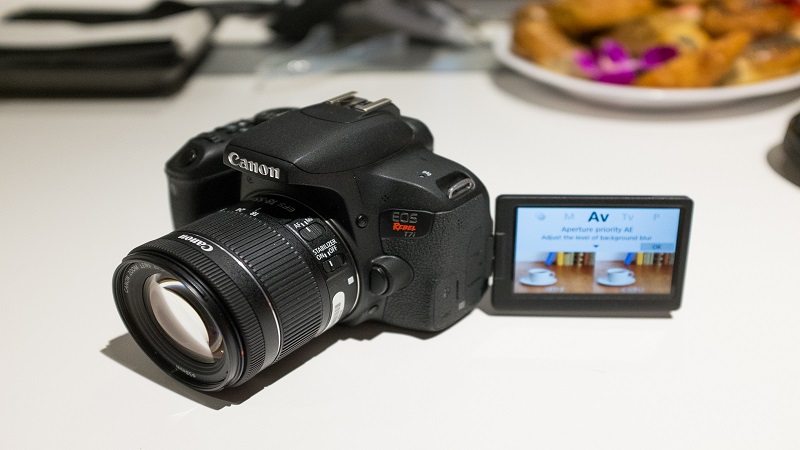Canon has introduced the EOS 250D a new DSLR, which has a swivel touch screen, takes photos with 24 megapixels and is equipped with a Digic-8 image processor. The APS-C size sensor can record videos in 4K resolution. With the predecessor 200D videos could only be recorded in full HD.
The camera is equipped with two autofocus systems. In normal operation via the viewfinder, phase autofocus with nine measuring fields and across the sensor in the middle is used. The live view operation on display uses so-called dual-pixel CMOS autofocus. This autofocus system is also used on the Canon 250D to focus on the subject’s eyes when they are detected.
The camera weighs 450 grams and can take continuous shooting at 5 frames per second. The battery should allow 1070 shots, which is significantly more than the 650 pieces in the 200D.
This phase difference autofocus is based on a special image sensor setup. Each pixel consists of two photodiodes, which can capture light independently of each other. The phase differences of the two parallax images are determined in order to determine the lens positions for correct focusing.
In the competing contrast measurement method; however, the lens design is moved back and forth until the contrast determines the correct position. This usually takes longer and leads to a perceived as a hectic image, which disturbs especially when filming.
If required, the 250D can also create time-lapse recordings or extract individual images with the 8.3-megapixel resolution from the recorded video material and save them as JPEGs.
The 250D is equipped with Wi-Fi and Bluetooth to pass the images to connected computers or to be controlled remotely via a smartphone or tablet.
Canon sells the EOS 250D from the end of April 2019 in three case colors: black, silver and white. Without a lens, it costs about 550 euros. If you buy the triple zoom Canon EF-S 18-55 IS STM; you pay 650 Euro. Together with the EF-S 18-135mm IS lens, the price is around 1,050 euros.




